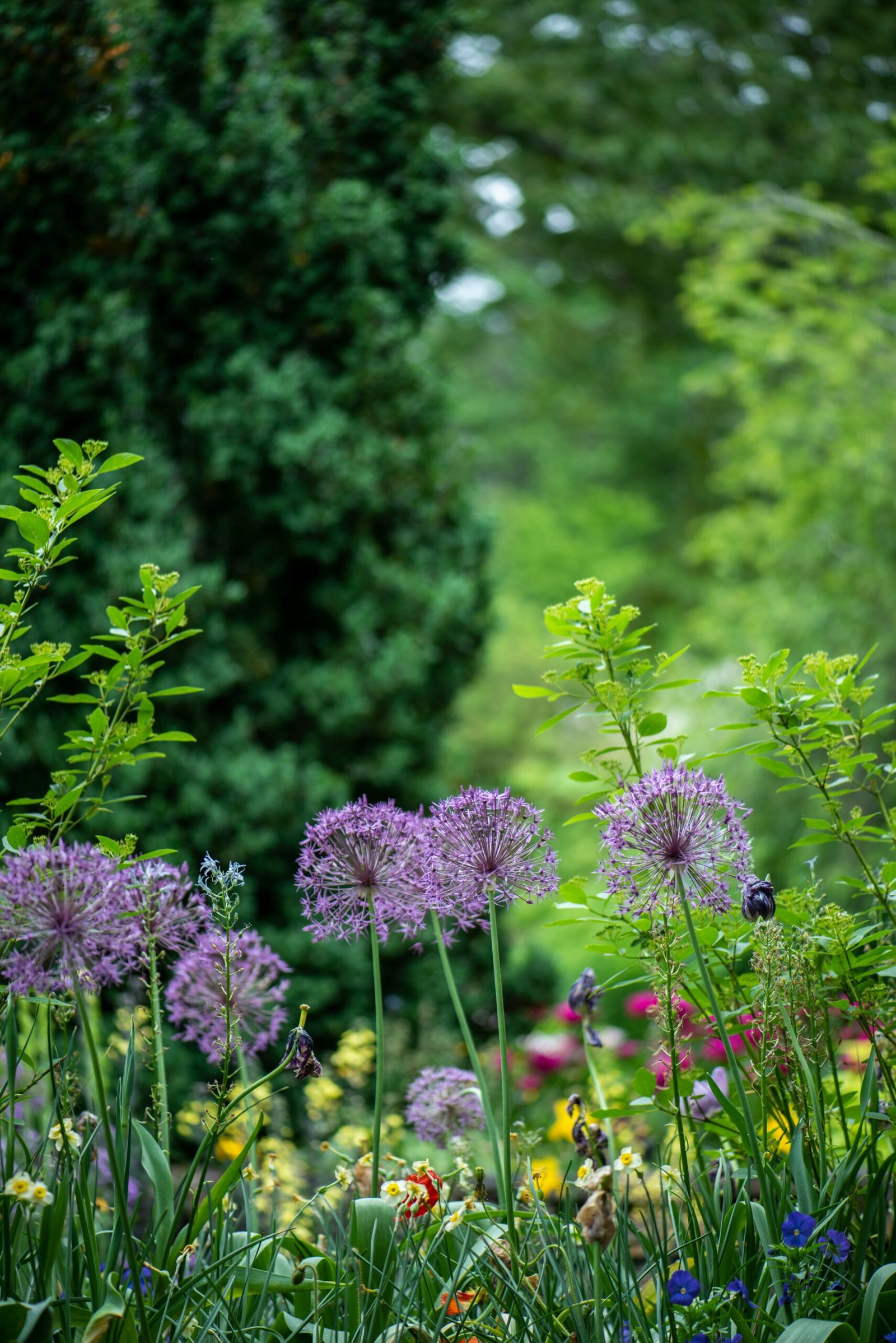
When designing a children’s garden, it is important to consider the age and interests of your children. For younger children, you may want to create a sensory garden filled with plants that have interesting textures, colors, and scents. This will engage their senses and encourage exploration. You can include plants like lamb’s ear, which has soft and fuzzy leaves, or lavender, which has a soothing scent.
For older children, you can create a vegetable garden where they can learn about the process of growing their own food. This can be a great way to teach them about nutrition and sustainability. You can start by choosing easy-to-grow vegetables like tomatoes, lettuce, and carrots. Involve your children in every step of the process, from planting the seeds to harvesting the vegetables. This will not only teach them valuable skills but also instill a sense of pride and accomplishment.
Another important aspect to consider when designing a children’s garden is the inclusion of play areas. Children love to play and explore, so it’s important to provide them with spaces where they can run, jump, and climb. You can create a mini obstacle course with stepping stones, balance beams, and a small climbing wall. This will not only keep them active but also help develop their motor skills and coordination.
In addition to the play areas, you can also incorporate educational elements into the garden. For example, you can create a butterfly garden by planting flowers that attract butterflies, such as milkweed and butterfly bush. This will not only provide a beautiful display of flowers but also attract butterflies, which can be a great opportunity for children to learn about the life cycle of these insects.
Furthermore, you can include a bird feeder and birdhouse in your children’s garden. This will attract birds and provide children with the opportunity to observe and learn about different bird species. You can also hang educational signs around the garden with interesting facts about birds or other wildlife that may visit the garden.
Lastly, don’t forget to involve your children in the maintenance of the garden. Teach them about the importance of watering, weeding, and taking care of plants. This will not only teach them responsibility but also provide them with a sense of ownership over the garden.
In conclusion, creating a children’s garden is a wonderful way to connect your children with nature and provide them with a space to learn and play. By considering their age and interests, incorporating play areas and educational elements, and involving them in the maintenance of the garden, you can create a magical and educational space that your children will love.
1. Choose the Right Plants
When designing a children’s garden, it’s important to choose plants that are safe and engaging for kids. Opt for plants with interesting textures, vibrant colors, and enticing scents. Some great options include sunflowers, marigolds, lavender, and strawberries. These plants not only look beautiful but also provide sensory experiences for children.
Additionally, consider planting a variety of edible plants such as cherry tomatoes, lettuce, and herbs. This will not only encourage children to eat healthy but also teach them about where their food comes from.
When selecting plants for a children’s garden, it’s important to consider the safety aspect. Avoid plants that are poisonous or have thorns, as they can pose a risk to children. Instead, opt for child-friendly plants that are non-toxic and have soft leaves or petals.
Incorporating plants with different textures can also enhance the sensory experience for children. For example, you could include plants with fuzzy leaves, smooth bark, or rough stems. This will allow children to explore and touch the plants, stimulating their sense of touch and promoting sensory development.
Another important factor to consider when choosing plants for a children’s garden is their ability to attract wildlife. Select plants that attract butterflies, bees, and birds, as this will not only add beauty to the garden but also provide an opportunity for children to learn about different species and their role in the ecosystem. Consider planting nectar-rich flowers like milkweed and coneflowers to attract butterflies, or install a bird feeder to attract a variety of bird species.
Furthermore, incorporating plants with vibrant colors can help create an engaging and visually stimulating environment for children. Plant flowers in a range of colors such as red, yellow, purple, and orange to create a vibrant display. You can also plant flowers that change color throughout the season, providing an ever-changing landscape that will captivate children’s attention.
In conclusion, when designing a children’s garden, it’s important to choose plants that are safe, engaging, and educational. By selecting plants with interesting textures, vibrant colors, and enticing scents, you can create a sensory-rich environment that will captivate children’s imagination. Additionally, incorporating edible plants and those that attract wildlife will provide opportunities for learning about healthy eating and the natural world. So, get creative and start planting the perfect garden for children to explore and enjoy!
2. Create Themed Areas
To make the garden more exciting for children, consider creating themed areas. This could be a fairy garden, a dinosaur garden, or even a vegetable patch. Themed areas provide a sense of adventure and encourage imaginative play.
For example, in a fairy garden, you can include miniature houses, fairy statues, and plants with delicate flowers. You can create a whimsical pathway lined with colorful pebbles, leading to a small fairy house nestled among the flowers. Adding a small pond or a tiny bridge can enhance the magical atmosphere of the fairy garden. The plants you choose can include dainty flowers like primroses, foxgloves, and pansies, which will attract butterflies and bees, further adding to the enchanting ambiance.
In a dinosaur garden, you can have dinosaur footprints leading up to a hidden treasure or a dinosaur skeleton replica. You can create a mini excavation site where children can dig for fossils or bury dinosaur toys for them to discover. Planting ferns, cycads, and other plants with prehistoric-looking leaves will transport children back to the time of the dinosaurs. Adding large rocks and boulders can create a sense of adventure and make the garden feel like a prehistoric jungle.
When creating themed areas, it’s important to involve your children in the process of designing and decorating. Let them choose the plants, decorations, and even come up with their own ideas for the theme. This not only encourages their creativity but also gives them a sense of ownership over the garden. It becomes a space where they can let their imaginations run wild, creating memories that will last a lifetime.
– Create a butterfly garden: Transform a corner of the garden into a haven for butterflies. Plant flowers that attract butterflies, such as milkweed, lavender, and coneflowers. Children can observe the different species of butterflies that visit the garden and learn about their life cycle.
– Build a climbing wall: Install a climbing wall that is suitable for children of different ages and skill levels. This will not only provide them with a physical challenge but also help improve their coordination and strength.
– Set up a vegetable patch: Teach children about the importance of healthy eating and where food comes from by setting up a vegetable patch. They can learn how to plant and care for vegetables, harvest them when they are ready, and even cook simple dishes using the fresh produce from the garden.
– Create a fairy garden: Spark children’s imagination by creating a fairy garden. Use miniature furniture, tiny houses, and decorative accessories to create a magical world where fairies and other mythical creatures can live. Children can use their creativity to design and decorate the fairy garden, and even create stories and adventures for the imaginary inhabitants.
– Install a weather station: Foster children’s interest in science by installing a weather station in the garden. They can learn how to measure and record temperature, rainfall, wind speed, and other weather conditions. This will not only teach them about the weather but also help develop their observation and data collection skills.
– Build a treehouse: Create a special place for children to play and relax by building a treehouse. This elevated hideaway will provide them with a sense of adventure and a space of their own. They can use their imagination to turn it into a clubhouse, a reading nook, or a mini theater.
Incorporating these interactive features in the garden will not only make it a fun and engaging space for children but also provide them with valuable learning opportunities. It will encourage them to explore the natural world, develop their creativity and imagination, and foster a love for nature and the environment. – Create a sensory garden: Design a section of the children’s garden that stimulates all five senses. Include plants with different textures, scents, and colors for children to explore. They can touch soft leaves, smell fragrant flowers, and observe vibrant hues, enhancing their sensory development.
– Build a birdhouse: Encourage children to build and decorate birdhouses to attract birds to the garden. This activity teaches them about different bird species, their habitats, and the importance of creating a welcoming environment for wildlife.
– Install a composting area: Teach children about the importance of recycling and reducing waste by setting up a composting area in the garden. They can learn how organic materials break down and contribute to healthy soil, fostering their understanding of environmental sustainability.
– Create a nature-inspired art corner: Set up an art corner where children can create artwork using natural materials found in the garden, such as leaves, flowers, and twigs. This activity promotes creativity, imagination, and an appreciation for the beauty of nature.
– Establish a reading nook: Design a cozy reading nook in the garden where children can enjoy books related to nature, gardening, and wildlife. This space encourages a love for reading while connecting them to the garden environment.
– Introduce a worm farm: Teach children about the role of worms in soil health by introducing a worm farm. They can observe the worms’ activities, learn about the process of vermicomposting, and understand the importance of these tiny creatures in maintaining a healthy garden ecosystem.
– Set up a nature scavenger hunt: Create a list of items for children to find in the garden, such as specific leaves, rocks, or insects. This activity promotes observation skills, critical thinking, and an understanding of the diversity of plants and animals in their surroundings.
– Organize gardening workshops: Invite local experts or gardeners to conduct workshops in the children’s garden. These workshops can cover topics such as plant care, gardening techniques, and environmental conservation, providing valuable hands-on learning experiences for children.
By incorporating these learning opportunities into the children’s garden, you can create an enriching environment that fosters curiosity, creativity, and a deeper understanding of the natural world. – Create clear pathways: Ensure that there are clear pathways throughout the garden to prevent any tripping hazards. Use materials such as gravel or mulch to create stable and even surfaces for children to walk on.
– Provide adequate lighting: If children will be using the garden in the evening or during darker hours, it is important to have proper lighting installed. This will help prevent accidents and allow children to navigate the space safely.
– Consider water safety: If your garden includes any water features such as a pond or fountain, take precautions to ensure that they are safely enclosed or supervised. Consider installing a childproof cover or fence around these areas to prevent any accidents.
– Create a first aid station: It is always a good idea to have a designated area in the garden where first aid supplies are readily available. This could include basic items such as band-aids, antiseptic wipes, and sunscreen. Make sure that all supplies are stored in a childproof container and are easily accessible in case of an emergency.
– Educate children about safety: Take the time to teach children about basic garden safety rules. This could include things like not eating plants without permission, washing hands after handling soil, and staying away from dangerous tools or equipment. By educating children about safety from an early age, you are empowering them to make responsible choices while enjoying the garden.
Creating a safe environment in a children’s garden is essential to ensure that children can explore and learn without any unnecessary risks. By implementing these safety measures, you can provide a space that is not only fun and engaging but also promotes the well-being of children.




